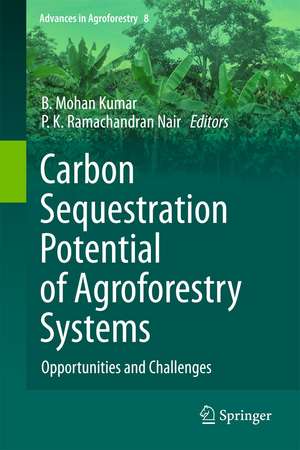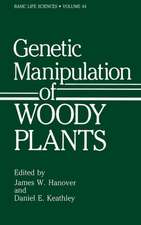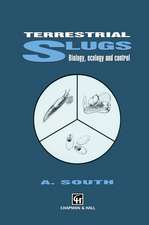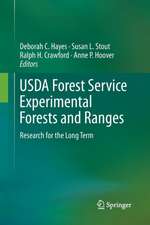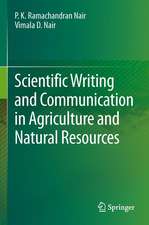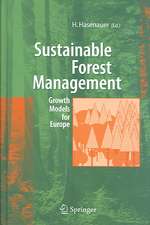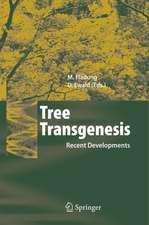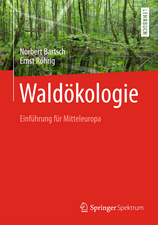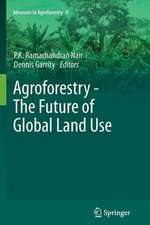Carbon Sequestration Potential of Agroforestry Systems: Opportunities and Challenges: Advances in Agroforestry, cartea 8
Editat de B. Mohan Kumar, P. K. Ramachandran Nairen Limba Engleză Paperback – 26 noi 2013
| Toate formatele și edițiile | Preț | Express |
|---|---|---|
| Paperback (1) | 1817.22 lei 6-8 săpt. | |
| SPRINGER NETHERLANDS – 26 noi 2013 | 1817.22 lei 6-8 săpt. | |
| Hardback (1) | 1817.85 lei 6-8 săpt. | |
| SPRINGER NETHERLANDS – 5 aug 2011 | 1817.85 lei 6-8 săpt. |
Preț: 1817.22 lei
Preț vechi: 2216.13 lei
-18% Nou
Puncte Express: 2726
Preț estimativ în valută:
347.72€ • 363.05$ • 287.79£
347.72€ • 363.05$ • 287.79£
Carte tipărită la comandă
Livrare economică 05-19 aprilie
Preluare comenzi: 021 569.72.76
Specificații
ISBN-13: 9789400737778
ISBN-10: 9400737777
Pagini: 328
Ilustrații: XVIII, 310 p.
Dimensiuni: 155 x 235 x 17 mm
Greutate: 0.46 kg
Ediția:2011
Editura: SPRINGER NETHERLANDS
Colecția Springer
Seria Advances in Agroforestry
Locul publicării:Dordrecht, Netherlands
ISBN-10: 9400737777
Pagini: 328
Ilustrații: XVIII, 310 p.
Dimensiuni: 155 x 235 x 17 mm
Greutate: 0.46 kg
Ediția:2011
Editura: SPRINGER NETHERLANDS
Colecția Springer
Seria Advances in Agroforestry
Locul publicării:Dordrecht, Netherlands
Public țintă
GraduateCuprins
List of Contributors.- List of Reviewers.- Preface.- Section 1. Measurement and Estimation.- 1. Methodological challenges in estimating carbon sequestration potential of agroforestry systems.- 2. Carbon sequestration potential of agroforestry practices in temperate North America.- 3. Carbon sequestration in European agroforestry systems.- 4. Carbon sequestration potential of agroforestry systems in Africa.- 5. Soil carbon sequestration in cacao agroforestry systems: a case study from Bahia, Brazil.- 6. Carbon sequestration potential of silvopastoral and other land use systems in the Chilean Patagonia.- 7. Carbon pools in tree biomass and soils under rotational woodlot systems in eastern Tanzania.- 8. Silvopasture and carbon sequestration with special reference to the Brazilian Savanna (Cerrado).- 9. Biomass and carbon accumulation in land use systems of Claveria, the Philippines.- Section 2. Agrobiodiversity and Tree management.- 10. Linking carbon, biodiversity and livelihoods near forest margins: the role of agroforestry.- 11. Assessing the carbon sequestration in short rotation coppices of Robinia pseudoacacia L. on marginal sites in northeast Germany.- 12. Does tree management affect biomass and soil carbon stocks of Acacia mangium Willd. stands in Kerala, India?.- Section 3. Policy and Socioeconomic Aspects.- 13. Can forest carbon finance influence land tenure security in project areas? Preliminary lessons from projects in Niger and Kenya.- 14. Constructing public policy in a participatory manner: from local carbon sequestration projects to network governance in Chiapas, Mexico.- 15. Inpang carbon bank in northeast Thailand: A community effort in carbon trading from agroforestry projects.- 16. The socioeconomic context of carbon sequestration in agroforestry: A case study from homegardens of Kerala, India.- Subject index.
Textul de pe ultima copertă
This multi-authored volume contains peer-reviewed chapters from the world’s leading researchers and professionals in this topic. It is a compendium of original research articles, case studies, and regional overviews and summarizes the current state of knowledge on carbon sequestration potential of agroforestry systems. The main hypothesis of the book is that the farmers since time immemorial have integrated an array of tree and crop species in their land use systems as a means to achieve higher productivity, risk avoidance, product diversification, and sustainability. These multispecies production systems also impact the ecosystem processes favorably. Yet, our understanding of the diversity attributes and carbon dynamics under agroforestry is not adequate. Although carbon sequestration is a focal theme of discussion in most agroforestry and climate conferences, publications on carbon sequestration in agroforestry are scattered. This book, with 16 chapters organized into three broad sections titled: Measurement and Estimation, Agrobiodiversity and Tree Management, and Policy and Socioeconomic Aspects, represent a cross section of the opportunities and challenges in current research and emerging issues in harnessing carbon sequestration potential of agroforestry systems. The book is unique in its exclusive and global coverage of the subject, and constitutes a valuable reference material for students and researchers in the field of agroforestry and climate change mitigation.
Caracteristici
Global coverage of the subject Compendium of original research articles, case studies, and regional overviews Focuses on current research and emerging issues
